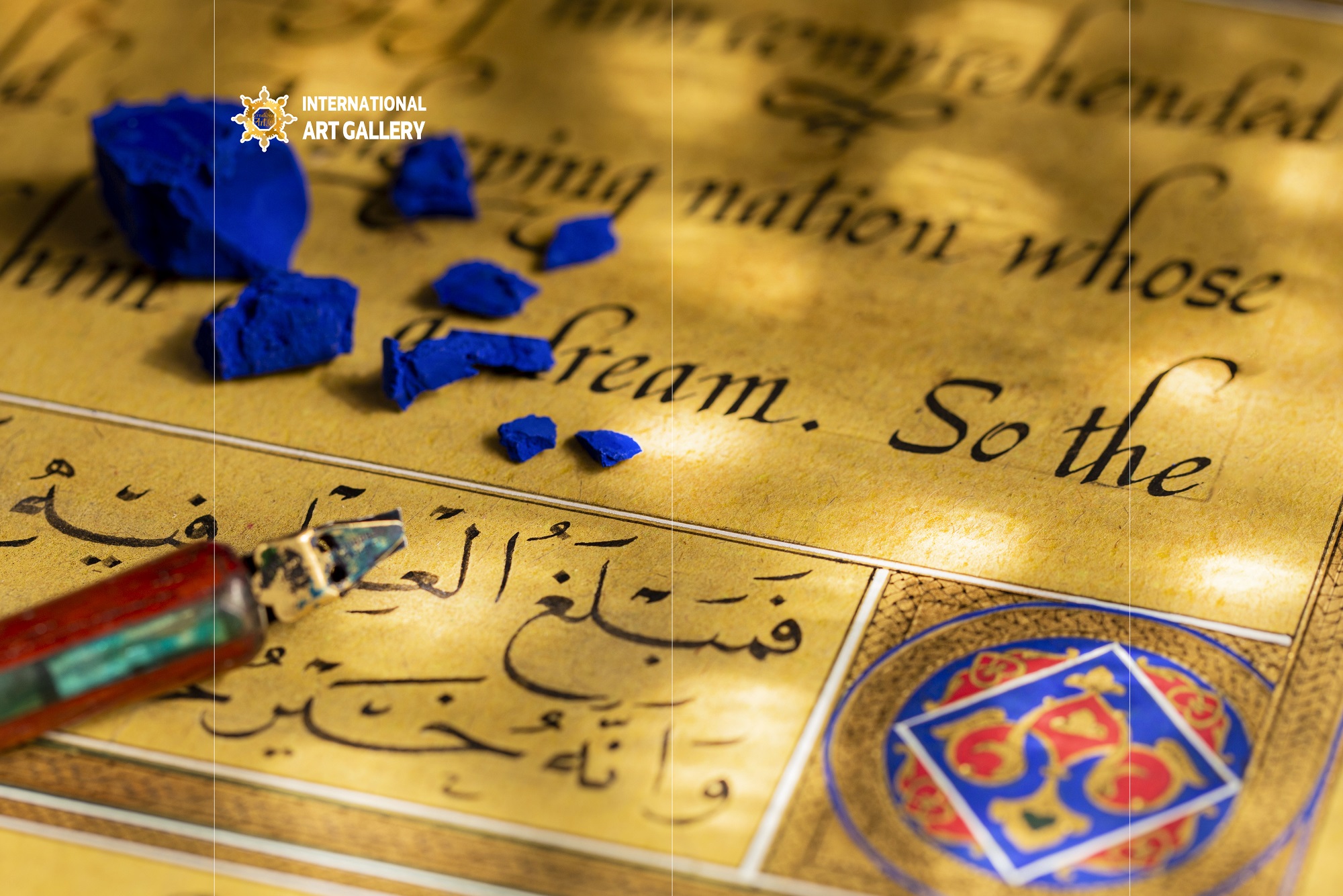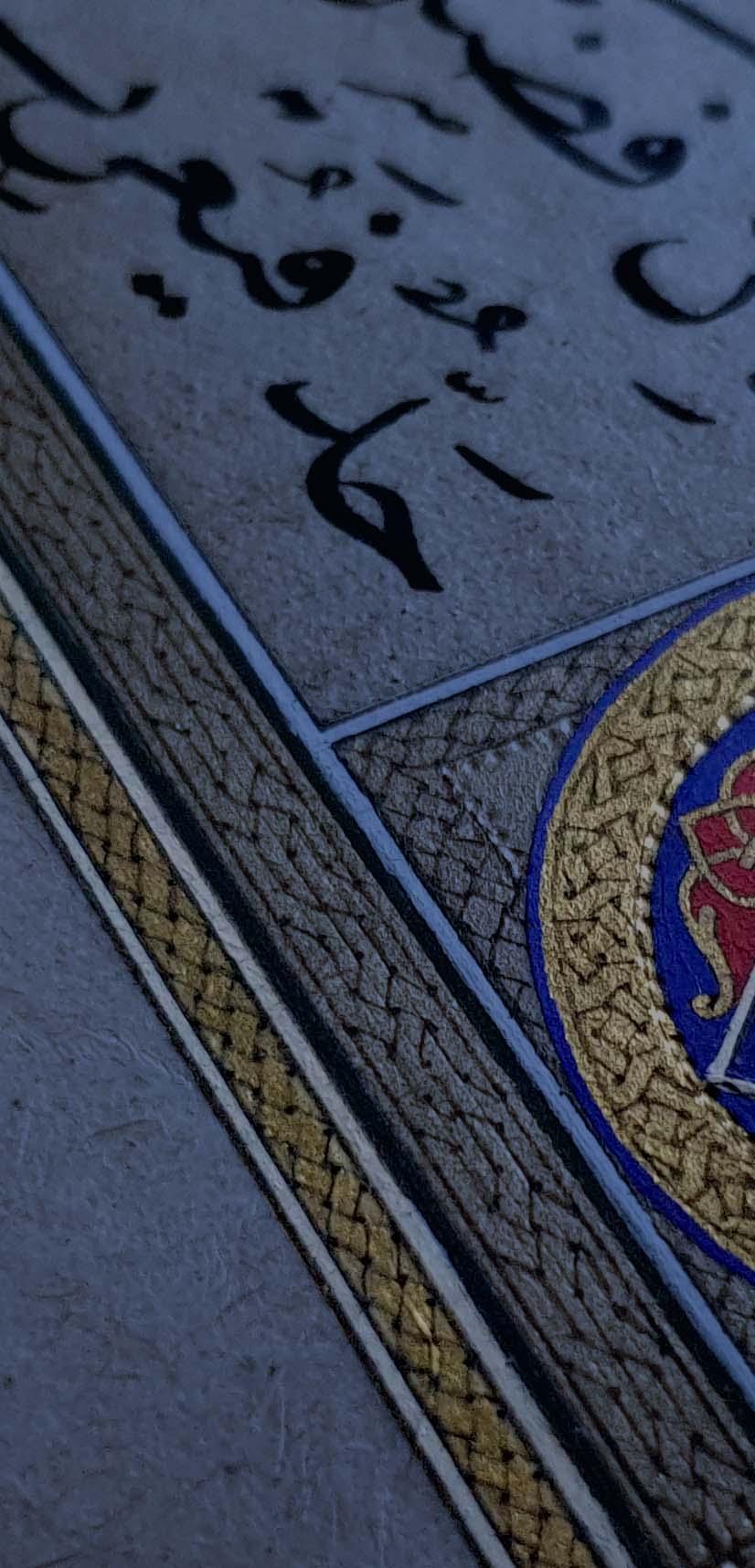
Creation of Qasidat Al Burdah
Prophet Mohammad (peace be upon him) was the prophet and the founder of Islam in 11 A. H. It is quoted that Kaa’b Ibn Zahir the Arab poet after converting to Islam wrote a poem the name of which was Al Burdah. Prophet Mohammad (peace be upon him) was greatly surprised and as a token of love removed his cloak and gave it to the poet. Seven centuries later, Abu Abdullah Muhammad Ibn Saeed Bin Hamad Al Senhaji Al Busiri (Egyptian jurist, inscriber, teacher of Quran, mathematician and poet in seventh century A.H.) wrote a poem in praise of the character, qualities and life style of the Holy Prophet called Qasidat Al Burdah. The name of this poem in that time was “al-Kawākib ad-durriyya fī Mad Khayr al-Bariyya”. Al Busiri got partially paralyzed years later and saw the Prophet Mohammad (peace be upon him) in his dream. His Highness covered the poet with his cloak, he was cured. Al Busiri always repeated this poem in every state. One day he read the poem for a spiritual wanderer and the latter transmitted it from mouth to mouth. Qasidat Al Burdah (in 10 chapters and 165 verses) is the most famous eulogy in praise of the Holy Prophet of Islam is Sunnite world which is frequently recited, read, written and translated into different languages and used in ceremonies and occasions.
Given the importance and fame of this Qasidat, one dares to call it the most perfect and beautiful eulogy of the Prophet Mohammad that has praised the virtues of the Prophet Mohammad in ten independent chapters.
The fame of this Qasidat in all Islamic and non-Islamic countries, the necessity of the development and promotion of the prophetic virtues and life style in those societies which do not have any understanding of its Arabic content, the composition of Arabic poems and the eloquent translation of it provided by Dr Syed Mohiuddin Qaderi have all rendered the performance of this project urgent than before.
Thus, in the first phase, thirty-two verses of the elegy were calligraphed in the form of 30 magnificent bilingual works which are decorated by 24 karat gold.
And in the second phase of this art project, the whole Qasidat including all its 10 chapters on different subjects in praise of the virtues of the Holy Prophet of Islam will be performed in the form of a magnificent bilingual book.

More than seven hundred years have passed since the compilation of this poetic work, and great artists created magnificent and lasting works. The majority of these great works in different historical eras have presented the original Arabic content using decorative arts aiming at the enrichment of the Islamic arts for the Muslim nation and paying no attention to the non-Muslim audience.
But thanks to the expansion of translation techniques into different languages including English, French and etc., the path was paved for the presentation of the Quranic notions and Islamic literature and the creation of the dialogue between the world religions. Thus, the unknown content was communicated to the people who are interested in different languages.
On the other hand, what has been created in the past century by the great calligraphers and Islamic ornamentation (Tazhib) artists in terms of Islamic arts has not been bilingual or multilingual and a collection of Qur'anic and Islamic literature and poems has not been created in other languages.
At the same time, what was created in the course of these centuries by the greatest masters of calligraphy and illuminated manuscript in the Islamic written arts for the bilingual content did not indeed focus on the bilingual content and paid no attention to the artistic show box of the translation of Quran and Islamic literature and poems given the wider extent of the translation into different languages. Thus, given the fact that the translation of Quran and Islamic literature and poems into different languages of the world is now considered to be one of the treasures of Islamic civilization, the use of international (non-Islamic) calligraphy arts and the creation of the bilingual art works as complementing the notions of the calligraphy works in the international arena is one of the issues of the further expansion and promotion of the level of Islamic arts in international scale.
 THE SOLUTION
THE SOLUTION
Due to his knowledge of Islamic culture and thanks to his acquisition of the artistic proficiencies in the non-Islamic calligraphy arts and their combination with Islamic written arts, Mojtaba Karami as the founder of the creative style of production of the bilingual artworks in Islamic written arts in two decades (between the years 1999 and 2021) in collaboration with a seasoned team consisted of 15 artists has created 30 bilingual magnificent Arabic-English artworks in the form of a selection of renowned quatrains from the eulogies written of the Prophet Mohammad by Sheikh Al Busiri in Islamic world.
THE SOLUTION
 the solution
the solution
the solution
This collection has been performed for the first time in the history of the written Islamic arts aiming at the presentation of the key notions of this poetic work and reflection of the importance of the character of the Prophet Mohammad in non-Muslim societies in four years.
This collection of works also has other goals as follows:
• Revelation of the importance of the techniques of translation of Islamic texts into different languages and the promotion of the people who are active in the field of the translation of the Islamic text.
• Creation of a bridge for the presentation of Islamic arts to the non-Muslim audience.
• The persuasion of non-Muslim calligraphists to perform the translation of Islamic texts and creation of a competition among the non-Muslim artists in this area.
